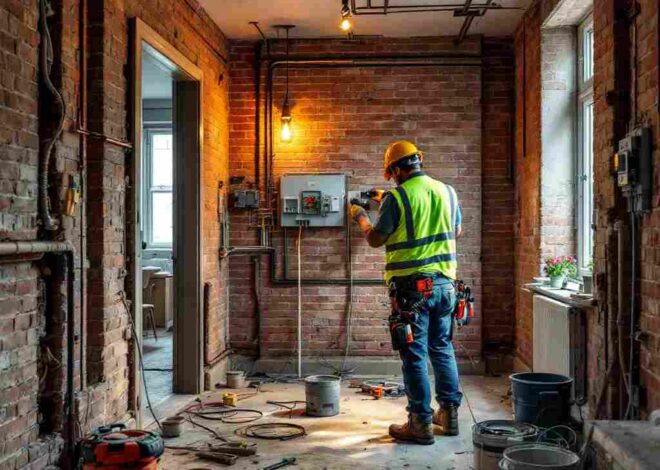
Your Ultimate Checklist for Mold Prevention in Every Room
A Breath of Fresh Air!Picture this: you walk into your home, and instead of a refreshing breeze, you’re greeted by that musty smell. Yikes! Mold can be a sneaky intruder, thriving in the hidden corners of our living spaces and wreaking havoc on our health and happiness. But fear not—preventing mold doesn’t have to be an overwhelming task! In this comprehensive checklist, we’ll arm you with practical tips and tricks tailored for every room in your house. Whether it’s the dampness of your bathroom or the humidity lurking in your basement, we’ve got you covered. Get ready to reclaim your space as we guide you through simple yet effective strategies that will keep mold at bay and ensure fresh air flows freely throughout your home. Let’s dive right in to create a healthier environment for you and your loved ones!
Introduction to Mold Prevention and its potential dangers
Mold is more than just an unsightly nuisance. It can pose serious health risks, especially for those with allergies or respiratory issues. What starts as a small patch of green or black can quickly spread into a much larger problem if not addressed promptly. Understanding how and where mold thrives is crucial in keeping your home safe and healthy.
Every room in your house has its own unique challenges when it comes to mold prevention. From the steamy bathroom to the dark corners of the basement, understanding these environments helps you stay one step ahead. This checklist will guide you through each area of your home, providing practical tips to combat mold growth effectively.
Whether you’re moving into a new place or looking to improve your current living space, taking proactive measures against mold is essential for maintaining a comfortable and clean environment. Let’s dive into effective strategies that ensure every corner remains fresh and dry!
Understanding the causes of mold growth in different rooms
Mold thrives in environments where moisture is abundant. Each room in your home presents unique challenges.
In bathrooms, humidity from showers and baths creates the perfect breeding ground for mold spores. Poor ventilation can exacerbate this issue, allowing damp air to linger.
Kitchens are another hotspot due to food spills and cooking steam. Mold can find its way into cabinets or appliances if they’re not kept dry.
Bedrooms may seem safe, but moisture from breathing and sweating accumulates over time. Bedding that isn’t washed frequently enough also becomes susceptible.
Living rooms often experience high humidity levels, especially with houseplants or wet clothes left out to dry.
Basements tend to trap moisture naturally due to their underground location, while attics suffer from inadequate insulation and airflow issues that encourage growth as well. Understanding these factors is essential for effective mold prevention strategies.
Bathroom: tips for preventing mold in a high moisture area
The bathroom is a prime location for mold due to its high humidity. To combat this, start by ensuring proper ventilation. Open windows when possible and run exhaust fans during and after showers.
Regularly check for leaks under sinks and around toilets. Any moisture can lead to mold growth if not addressed quickly.
Invest in mold-resistant paint or materials when renovating your space. These options can significantly reduce the risk of mold taking hold.
Keep surfaces dry by wiping down mirrors, tiles, and countertops after use. A squeegee in the shower can help remove excess water from walls.
Lastly, consider using dehumidifiers or moisture absorbers to maintain an ideal humidity level between 30-50%. This simple adjustment makes a big difference in keeping your bathroom fresh and clean.
Kitchen: how to keep your food safe from mold and prevent it from growing in cabinets and appliances
The kitchen is a bustling hub, but it can also be a breeding ground for mold if not properly managed. Start by regularly checking your pantry and cabinets. Clear out expired items and wipe down shelves with vinegar or baking soda to eliminate potential spores.
Proper food storage is crucial. Use airtight containers for grains, flour, and other dry goods to keep moisture at bay. It’s also wise to store perishables in the fridge promptly after use.
Don’t forget your appliances! Clean the refrigerator frequently and pay special attention to spills that may go unnoticed. Ensure that your dishwasher has proper drainage; standing water can lead to unwanted growth.
Finally, maintain adequate ventilation while cooking. Open windows or turn on exhaust fans during meal prep. A little diligence goes a long way in keeping both your food safe and your kitchen mold-free.
Bedroom: simple steps to avoid mold growth on bedding and furniture
Mold loves damp environments, and your bedroom can be a prime target if you’re not careful. Start by keeping humidity levels low. Aim for around 30-50% relative humidity to create an unfriendly atmosphere for mold.
Regularly wash your bedding in hot water. This simple step helps eliminate any spores that may have settled on sheets or pillowcases. Don’t forget to dry everything thoroughly; moisture is mold’s best friend.
Consider using a dehumidifier if you notice persistent dampness, especially during humid months. Proper ventilation is crucial too—open windows whenever possible or use exhaust fans.
Keep furniture away from walls to allow air circulation. Check behind the furniture regularly for signs of hidden moisture or growth, as this area often gets overlooked.
Lastly, store clothes and linens in breathable containers rather than plastic bags. This prevents trapped moisture that can lead to unexpected mold surprises later on.
Living room: ways to reduce moisture and improve ventilation to prevent mold growth on walls, carpets, and furniture
Keeping your living room mold-free starts with controlling moisture. Start by using a dehumidifier, especially in humid seasons. This device can significantly reduce the amount of water vapor in the air.
Next, ensure proper ventilation by opening windows when weather permits. Fresh air circulation helps keep indoor humidity levels down and discourages mold growth.
Regularly check for leaks around windows and doors; even small drips can create damp conditions ideal for mold. Repair any issues promptly to prevent further damage.
Consider using breathable materials for carpets and furniture covers instead of heavy fabrics that trap moisture. Additionally, vacuum regularly to remove dust and allergens that may contribute to a musty environment.
Plants add beauty but can increase humidity if overwatered. Choose low-maintenance varieties or limit watering during high-humidity periods to strike a balance between aesthetics and health.
Basement: strategies for keeping this damp area dry and mold-free
Basements are prone to moisture, making them a prime breeding ground for mold. To combat this, start by improving drainage around your home. Ensure gutters direct water away from the foundation.
Invest in a dehumidifier. This handy device can significantly reduce humidity levels and keep your basement dry year-round. Aim for a humidity level below 60%.
Check for leaks regularly. Inspect pipes and walls for any signs of water intrusion or dampness. Addressing these issues promptly can prevent mold growth before it starts.
Consider sealing concrete floors and walls with waterproof coatings. This creates a barrier that keeps moisture out.
Finally, enhance ventilation by opening windows when possible or installing vents to allow fresh air circulation. A well-ventilated space is less likely to develop mold problems, protecting both your health and belongings.
Attic: ways to improve insulation and ventilation to prevent mold growth in this often neglected space
The attic is often an overlooked area in many homes, making it a prime candidate for mold growth. To combat this issue, proper insulation is essential. Insulation helps regulate temperature and reduces moisture buildup. Use materials like spray foam or fiberglass to create a barrier against the elements.
Ventilation also plays a critical role in preventing mold. Ensure that your attic has adequate airflow by installing vents at both the eaves and peak of the roof. This allows hot air to escape while drawing in cooler, drier air from outside.
Regularly check for any signs of water leaks or condensation. Addressing these issues promptly can prevent larger problems down the line.
Consider adding a dehumidifier if humidity levels are consistently high during warmer months. Maintaining optimal humidity can make all the difference in keeping your attic dry and mold-free.
Overall tips for maintaining a mold-free home, including regular cleaning routines and identifying potential problem areas
To maintain a mold-free home, consistency is key. Develop regular cleaning routines that include wiping down surfaces in high-moisture areas like the bathroom and kitchen.
Keep an eye on your home’s humidity levels. Using dehumidifiers can significantly reduce excess moisture, making it less inviting for mold.
Check around windows and doors for leaks or condensation. These spots are often overlooked but can create perfect conditions for growth.
Inspect plumbing regularly to catch any leaks before they become a problem. A small drip can lead to big issues if ignored.
Ensure proper air circulation throughout your home by opening windows when weather permits or using exhaust fans in humid spaces.
Lastly, declutter frequently to minimize hidden damp spots where mold might thrive. Regularly assessing these areas helps you stay ahead of potential problems.
Conclusion
Mold prevention is essential for maintaining a healthy home. By understanding how mold grows and taking proactive steps in every room, you can safeguard your living space from its harmful effects.
Regular cleaning routines will help keep surfaces dry and free of debris where mold can thrive. Pay close attention to areas that tend to trap moisture or have limited airflow. Identifying potential problem zones like hidden leaks or poorly ventilated spaces is crucial.
Implementing these strategies not only protects your home but also enhances the well-being of everyone who resides within it. A few simple changes today can lead to a healthier tomorrow, ensuring you enjoy a safe and comfortable environment year-round. Prioritize mold prevention as part of your home maintenance routine, and you’ll reap the benefits for years to come.


